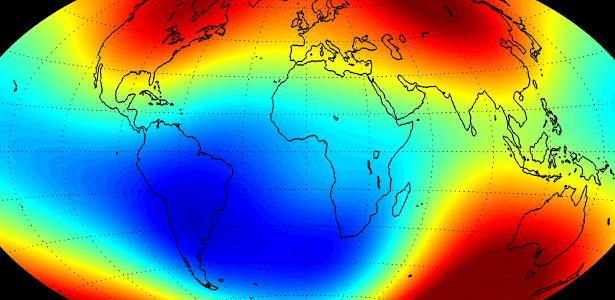What we think of as the North Pole on a map is not where compasses actually point. Magnetic North is farther away, near Canada and Greenland.
“The direction a magnetic compass points in forms an angle with geographic north, and this angle is called magnetic declination,” says Daniel Brandt.
The difference between magnetic and true north is called declination. It varies depending on your location on the planet, and is used by pilots to correct their course while flying.
What will the anomaly actually affect?
According to the USP professor, the Earth’s magnetic field acts as a shield that protects us from the solar wind (radiation and particles emitted by the Sun). “However, for us, who live on the Earth’s surface, and for aircraft, flying at altitudes below 12 km, we are still protected from the solar wind – even here we live in the anomaly zone,” says Daniele.
“Satellites orbiting at an altitude of more than 400 kilometers eventually end up affected by the anomaly, at which point the magnetic field becomes weaker. When a satellite passes through the anomaly, it may fail or be temporarily shut down to avoid damage,” says Daniel. “It also depends on solar activity.”

“Incurable thinker. Food aficionado. Subtly charming alcohol scholar. Pop culture advocate.”






More Stories
NASA Releases Selfie of Perseverance Rover Working on Mars
NVIDIA driver includes hidden Final Fantasy XVI profile
PlayStation Plus Extra and Premium saw a significant drop in players in July